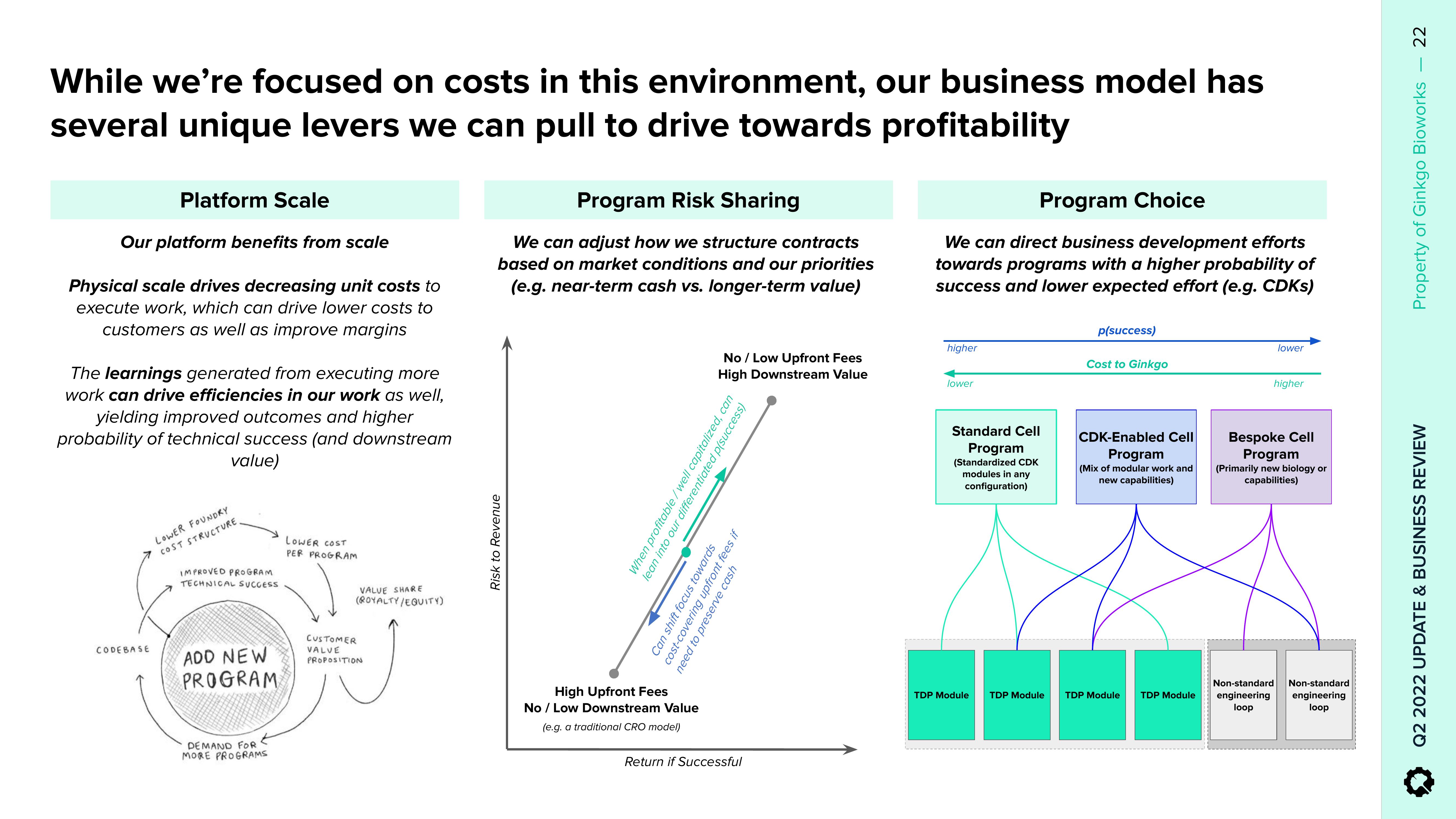Ginkgo Results Presentation Deck
While we're focused on costs in this environment, our business model has
several unique levers we can pull to drive towards profitability
Platform Scale
Our platform benefits from scale
Physical scale drives decreasing unit costs to
execute work, which can drive lower costs to
customers as well as improve margins
The learnings generated from executing more
work can drive efficiencies in our work as well,
yielding improved outcomes and higher
probability of technical success (and downstream
value)
CODEBASE
LOWER FOUNDRY
COST STRUCTURE,
IMPROVED PROGRAM
TECHNICAL SUCCESS
ADD NEW
PROGRAM
DEMAND FOR
MORE PROGRAMS
LOWER COST
PER PROGRAM
VALUE SHARE
(ROYALTY/EQUITY)
CUSTOMER
VALVE
PROPOSITION
Program Risk Sharing
We can adjust how we structure contracts
based on market conditions and our priorities
(e.g. near-term cash vs. longer-term value)
Risk to Revenue
High Upfront Fees
No / Low Downstream Value
(e.g. a traditional CRO model)
No / Low Upfront Fees
High Downstream Value
When profitable / well capitalized, can
lean into our differentiated p(success)
Can shift focus towards
need to preserve cash
cost-covering upfront fees if
Return if Successful
Program Choice
We can direct business development efforts
towards programs with a higher probability of
success and lower expected effort (e.g. CDKS)
higher
lower
Standard Cell
Program
(Standardized CDK
modules in any
configuration)
TDP Module
TDP Module
p(success)
Cost to Ginkgo
CDK-Enabled Cell
Program
(Mix of modular work and
new capabilities)
TDP Module
TDP Module
lower
higher
Bespoke Cell
Program
(Primarily new biology or
capabilities)
Non-standard
engineering
loop
Non-standard
engineering
loop
22
Property of Ginkgo Bioworks
Q2 2022 UPDATE & BUSINESS REVIEWView entire presentation